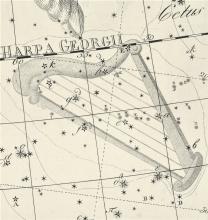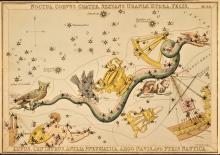Listen to today's episode of StarDate on the web the same day it airs in high-quality streaming audio without any extra ads or announcements. Choose a $8 one-month pass, or listen every day for a year for just $30.
You are here
Double Bright
The brightest star of Pegasus, the flying horse, is a bit difficult to pin down. Depending on how you define the constellation, two stars can claim the title. And one of those two changes brightness, so other stars in Pegasus can outshine it.
The brightest star in the classical connect-the-dots picture of Pegasus is known as Alpheratz. It’s in the Great Square, a pattern of four stars that outlines the horse’s body.
In the 1930s, though, astronomers drew precise boundaries for all the constellations. In this system, Alpheratz is just across the border of Andromeda, where it’s that constellation’s leading light. That leaves Pegasus with a fainter luminary: Enif, from an Arabic name that means “the horse’s nose.”
Enif is a supergiant. It’s perhaps a couple of hundred times wider than the Sun, and thousands of times brighter.
Enif doesn’t shine steadily, though. Instead, its brightness varies by a few percent. The change doesn’t follow any discernible pattern, so no one knows exactly how bright the star will appear on any given night.
And to complicate matters even more, Enif has been seen to flare several times brighter than average for brief periods. Such outbursts might be the result of giant explosions on the surface of the star. Such flares would be brighter than our entire Sun, and blast enormous amounts of particles and energy into space — briefly enhancing the brilliance of the flying horse’s leading light.
Script by Damond Benningfield






